Title search results
Showing 1488621 - 1488640 of 1502724 items
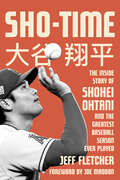
Sho-Time: The Inside Story of Shohei Ohtani and the Greatest Baseball Season Ever Played
By Jeff Fletcher. 2022
The story behind Major League Baseball’s two-way playing phenomenon and his rise from early days in Japan to his historic…
2021 MVP season.Shohei Ohtani of the Los Angeles Angels is playing baseball like no other major leaguer since Babe Ruth. His dominance as a two-way player—an electric pitcher and an elite slugger—made him the 2021 American League Most Valuable Player, the only player ever selected as an All Star as both a pitcher and hitter, and a member of Time 100’s most influential people of 2021.In Ohtani’s first two-way game of the 2021 season, he threw a pitch at 100 mph and hit a homer that left his bat at 115 mph, a confluence of feats unmatched by anyone else in the sport. He racked up eye-popping achievements all year. But awards and numbers tell only part of his amazing story.In Sho-Time, award-winning sportswriter Jeff Fletcher, who has covered Ohtani more than any other American journalist, charts Ohtani’s path through Japanese baseball to a championship with the Nippon-Ham Fighters, the recruiting war to bring him to the majors, his 2018 AL Rookie of the Year campaign, subsequent injury-riddled seasons, and then his historic 2021 season. Along the way, Fletcher weaves in the history of two-way players—including Babe Ruth and unsung Negro Leagues players like “Bullet” Joe Rogan, Martín Dihigo, and Ted “Double Duty” Radcliffe—and the Japanese athletes who preceded Ohtani in the majors. With insight from Japanese and American baseball front office personnel, managers, scouts, athletic trainers, ballplayers, and more, Sho-Time breaks down the physics of Ohtani’s game, his technologically advanced training, his international fame, and the role he and teammate Mike Trout are playing to lead baseball into the next generation.Praise for Sho-Time“Jeff Fletcher masterfully chronicles not only what Ohtani accomplished in ‘21, but also provides the full context to his achievements. . . . Fletcher’s book is the definitive look at Ohtani’s two-way majesty.” —Ken Rosenthal, Senior Writer at The Athletic“Historians will be talking about Shohei Ohtani’s 2021 season for decades, and thankfully the baseball gods arranged for Jeff Fletcher to be there to cover baseball’s best two-way player ever in the midst of a pandemic, to bear witness and mine details and write with grace about the sport’s most incredible individual performance.” —Buster Olney, ESPN“The essential portrait of baseball’s most captivating player. . . . Fletcher goes beyond the carefully scripted press conferences, revealing in vivid detail the challenges and triumphs of a baseball journey like no other.” —Tyler Kepner, The New York Times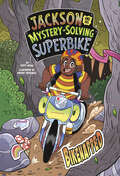
Bikenapped
By Scott Nickel. 2026
Jackson and his friend Lisa are ready for a fun bike ride—but Lisa’s bike is missing! In this action-packed early…
chapter book, Jackson’s imagination takes over, wondering if international bike thieves or aliens might be behind the mystery. With the help of his AI-powered bike, S.C.O.U.T., Jackson follows the clues through Boreville’s bike trails, dodging yappy dogs and sneaky squirrels. Can Jackson and S.C.O.U.T. track down the missing bike before it’s gone for good? With fast-paced action, humor, and clever tech, this exciting mystery will have young readers pedaling for more.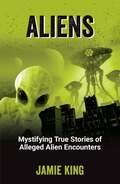
Aliens: Mystifying True Stories of Alleged Alien Encounters
By Jamie King. 2025
This intriguing anthology examines incidents that were so puzzling they led witnesses to draw one inevitable conclusion: that aliens really…
do exist. Inside you will discover some of the most mysterious reports of UFO sightings, close encounters and alien abductions from across the globe.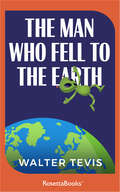
The &“beautiful&” novel that inspired the Showtime series, from a Nebula Award finalist (The New York Times). The Man Who…
Fell to Earth tells the story of Thomas Jerome Newton, an alien disguised as a human who comes to Earth on a mission to save his people. Devastated by nuclear war, his home planet, Anthea, is no longer habitable. Newton lands in Kentucky and starts patenting Anthean technology—amassing the fortune he needs to build a spaceship that will bring the last three hundred Anthean survivors to Earth. But instead of the help he seeks, he finds only self-destruction, sinking into alcoholism and abandoning his spaceship, in this poignant story about the human condition—which has inspired both a film starring David Bowie and the new series starring Chiwetel Ejiofor—by the acclaimed author of Mockingbird. &“Beautiful science fiction . . . The story of an extraterrestrial visitor from another planet is designed mainly to say something about life on this one.&” —The New York Times &“An utterly realistic novel about an alien human on Earth . . . Realistic enough to become a metaphor for something inside us all, some existential loneliness.&” —Norman Spinrad, author of The Iron Dream &“Those who know The Man Who Fell to Earth only from the film version are missing something. This is one of the finest science fiction novels of its period.&” —J. R. Dunn, author of This Side of Judgment
I Think I'm in Love with an Alien
By Ann Aguirre. 2025
Galaxy Quest meets Roswell in this quirky sci-fi rom-com from New York Times and USA Today bestselling author Ann Aguirre.He's…
stranded. He's desperate. He's not looking for love.Alien Tamzir Jaarn, a.k.a. Seeker, is paying the price for risking an illicit holiday on an interdicted planet. His ride off-world never showed, and he's been stranded on Earth for nearly a year. His gear is breaking down, food is becoming a problem, and if his camouflage unit fritzes, he'll wind up in a government lab.But he's met some cool humans online, and they've invited him to the biggest space-themed convention around. Why not make memories with them while he figures out how to get home?Space Con or bust!She's nerdy. She's flirty. She's ready for romance.Jennette Hammond is an endearing weirdo, voted most likely to bang an alien in high school. Her house is full of gray man collectibles, adorable tentacle monsters, and yes, in college, she volunteered for a SETI-type program. Not that she's ever had any close encounters of the sexy, alien kind. Heck, she's never even been able to convince anyone to attend Space Con.But that's about to change. Finally, she has online friends who have agreed to go, and it will be a romp to remember—and she'll finally put a face to the name of her longtime crush, Seeker.When alien meets adorkable, they're destined for an out-of-this-world affair…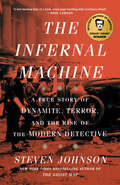
The Infernal Machine: A True Story of Dynamite, Terror, and the Rise of the Modern Detective
By Steven Johnson. 2024
&“A fast-burning fuse of a book, every page bursting with revelatory detail.&”—ERIK LARSONA sweeping account of the anarchists who terrorized…
the streets of New York and the detective duo who transformed policing to meet the threat—a tale of fanaticism, forensic science, and dynamite from the bestselling author of The Ghost MapWINNER OF THE EDGAR AWARD • A CHICAGO PUBLIC LIBRARY BEST BOOK OF THE YEAR • LONGLISTED FOR THE ANDREW CARNEGIE MEDAL FOR EXCELLENCE IN NONFICTIONSteven Johnson&’s engrossing account of the epic struggle between the anarchist movement and the emerging surveillance state stretches around the world and between two centuries—from Alfred Nobel&’s invention of dynamite and the assassination of Czar Alexander II to New York City in the shadow of World War I.April 1914. The NYPD is still largely the corrupt, low-tech organization of the Tammany Hall era. To the extent the police are stopping crime—as opposed to committing it—their role has been almost entirely defined by physical force: the brawn of the cop on the beat keeping criminals at bay with nightsticks and fists. The solving of crimes is largely outside their purview.The new commissioner, Arthur Woods, is determined to change that, but he cannot anticipate the maelstrom of violence that will soon test his science-based approach to policing. Within weeks of his tenure, New York City is engulfed in the most concentrated terrorism campaign in the nation&’s history: a five-year period of relentless bombings, many of them perpetrated by the anarchist movement led by legendary radicals Alexander Berkman and Emma Goldman. Coming to Woods&’s aide are Inspector Joseph Faurot, a science-first detective who works closely with him in reforming the police force, and Amadeo Polignani, the young Italian undercover detective who infiltrates the notorious Bresci Circle.Johnson reveals a mostly forgotten period of political conviction, scientific discovery, assassination plots, bombings, undercover operations, and innovative sleuthing. The Infernal Machine is the complex pre-history of our current moment, when decentralized anarchist networks have once again taken to the streets to protest law enforcement abuses, right-wing militia groups have attacked government buildings, and surveillance is almost ubiquitous.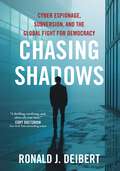
Chasing Shadows: Cyber Espionage, Subversion, and the Global Fight for Democracy
By Ronald J. Deibert. 2025
Instant Bestseller Like a John Le Carré novel updated for the digital age, Chasing Shadows provides a gripping account of…
how the Citizen Lab, the world&’s foremost digital watchdog, has uncovered dozens of cyber espionage cases and protects people in countries around the world. Called &“essential reading&” by Margaret Atwood, it&’s a chilling reminder of the invisible invasions happening on smartphones and computers around the world. In this real-life spy thriller, cyber security expert Ronald Deibert details the unseemly marketplace for high-tech surveillance, professional disinformation, and computerized malfeasance. He reveals how his team of digital sleuths at the Citizen Lab have lifted the lid on dozens of covert operations targeting innocent citizens everywhere. Chasing Shadows provides a front-row seat to a dark underworld of digital espionage, disinformation, and subversion. There, autocrats and dictators peer into their targets&’ lives with the mere press of a button, spreading their tentacles of authoritarianism through a digital ecosystem that is insecure, poorly regulated, and prone to abuse. The activists, opposition figures, and journalists who dare to advocate for basic political rights and freedoms are hounded, arrested, tortured, and sometimes murdered. From the gritty streets of Guatemala City to the corridors of power in the White House, this compelling narrative traces the journey of the Citizen Lab as it evolved into a globally renowned source of counterintelligence for civil society. As this small team of investigators disarmed cyber mercenaries and helped to improve the digital security of billions of people worldwide, their success brought them, too, into the same sinister crosshairs that plagued the victims they worked to protect. Deibert recounts how the Lab exposed the world&’s pre-eminent cyber-mercenary firm, Israel-based NSO Group—the creators of the phone-hacking marvel Pegasus—in a series of human rights abuses, from domestic spying scandals in Spain, Poland, Hungary, and Greece to its implication in the murder of Washington Post journalist Jamal Khashoggi in 2018.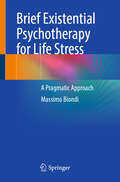
Brief Existential Psychotherapy for Life Stress: A Pragmatic Approach
By Massimo Biondi. 2025
The book presents a detailed description of brief existential psychotherapy (BEP) based on an articulated model, integrating knowledge from existential…
psychotherapy, psychobiology of human stress, mind-body techniques, and principles of positive psychiatry and psychology. BEP is conducted according to a pragmatic method, centered on the view of one's existence, analysis, and response to critical life stress events, designing a route of acceptance and search for meaning in life. BEP does not substitute other psychotherapies or their indications. It is born for the short-term treatment of crises after severe life stress events, such as deaths of loved ones, losses, divorce, retirement, personal or collective emotional traumas, major violations of law, and detention in jail, with a particular emphasis on severe somatic diseases (cancer, myocardial infarction, stroke, degenerative diseases, and other subacute or chronic conditions that change life’s perspective). The volume presents a methodology of BEP based on traditional clinical psychopathology, with a first step of medical and psychopathological assessment, establishing a categorical and a dimensional diagnosis. Then, subsequent steps are provided in a brief psychotherapy course, with a more common format of 12-20 sessions, 1hr duration. The issues and aims of treatment are transversal across different psychiatric diagnoses, meaning the intervention follows similar activity lines, independently from the specific categorical diagnosis. The intervention is dedicated to people with existential suffering, without psychopathological diagnosis, too. Medical therapy and psychopharmacological treatment are given according to patient needs; there is no preclusion toward the integration between psychotherapy and psychopharmacotherapy, as well as other techniques with evidence of efficacy. Moreover, in some cases, appropriate psychopharmacotherapy consents to psychotherapy, impossible otherwise. This volume will be an invaluable tool for psychotherapists, psychologists, psychiatrists, counselors, social workers, and other medical professionals.
Where the Hood At?: Fifty Years of Change in Black Neighborhoods
By Michael C. Lens. 2024
Substantial gaps exist between Black Americans and other racial and ethnic groups in the U.S., most glaringly Whites, across virtually…
all quality-of-life indicators. Despite strong evidence that neighborhood residence affects life outcomes, we lack a comprehensive picture of Black neighborhood conditions and how they have changed over time. In Where the Hood At? urban planning and public policy scholar Michael C. Lens examines the characteristics and trajectories of Black neighborhoods across the U.S. over the fifty years since the Fair Housing Act. Hip hop music was born out of Black neighborhoods in the 1970s and has evolved alongside them. In Where the Hood At? Lens uses rap’s growth and influence across the country to frame discussions about the development and conditions of Black neighborhoods. Lens finds that social and economic improvement in Black neighborhoods since the 1970s has been slow. However, how well Black neighborhoods are doing varies substantially by region. Overall, Black neighborhoods in the South are doing well and growing quickly. Washington D.C. and Atlanta, in particular, stand out as centers of Black affluence. Black neighborhoods in the Midwest and the Rust Belt, on the other hand, are particularly disadvantaged. The welfare of Black neighborhoods is related not only to factors within neighborhoods, such as the unemployment rate, but also to characteristics of the larger metropolitan area, such as overall income inequality. Lens finds that while gentrification is increasingly prevalent, it is growing slowly, and is not as pressing an issue as public discourse would make it seem. Instead, concentrated disadvantage is by far the most common and pressing problem in Black neighborhoods. Lens argues that Black neighborhoods represent urban America’s greatest policy failures, and that recent housing policies have only had mild success. He provides several suggestions for policies with the goal of uplifting Black neighborhoods. One radical proposal is enacting policies and programs, such as tax breaks for entrepreneurs or other small business owners, that would encourage Black Americans to move back to the South. Black Americans migrating South would have a better chance at moving to an advantaged Black neighborhood as improving neighborhood location is higher when moving across regions. It would also help Black Americans expand their political and economic power. He also suggests a regional focus for economic development policies, particularly in the Midwest where Black neighborhoods are struggling the most. One way to boost economic development would be to move federal agencies to the area. He also calls for building more affordable housing in Black suburbs. Black poverty is lower in suburbs than in central cities, so increasing housing in Black suburbs would allow Black households to relocate to more advantaged neighborhoods, which research has shown leads to improved life outcomes. Where the Hood At? is a remarkable and comprehensive account of Black neighborhoods that helps us to better understand the places and conditions that allow them flourish or impedes their advancement.
Dreams Achieved and Denied: Mexican Intergenerational Mobility (American Sociological Association's Rose Series)
By Robert Courtney Smith. 2024
U.S.-born Mexicans in New York City have achieved perhaps the biggest single generation jump in mobility in American immigration history.…
In 2020, 42-percent of second-generation U.S.-born Mexican men and 49-percent of U.S.-born Mexican women in New York City had graduated from college – versus a 13-14-percent second-generation college graduation rate for most places for most studies done in recent decades. How did U.S.-born Mexicans in New York City achieve such remarkable mobility? In Dreams Achieved and Denied, sociologist Robert Courtney Smith examines the laws, policies, and individual and family practices that promoted – and inhibited – their social mobility. For over twenty years, Smith followed the lives and mobility of nearly one hundred children of Mexican immigrants in New York City. Smith’s longitudinal, ethnographic data enabled him to intimately describe how specific mechanisms blocked or promoted mobility for years as his participants moved from adolescence through early adulthood and into established adulthood. Smith documents how having or gaining legal status made certain New York City or New York State policies and practices more efficacious in supporting individual and family efforts and strategies for mobility. Such immigrant-inclusive and mobility-promoting measures include enabling undocumented people to attend public colleges at in-state tuition rates, and later to get driver’s licenses, offering healthcare to all in New York City, and the City’s subway and school choice systems, which enabled students to attend better schools or take opportunities outside their neighborhoods. Smith finds that keeping the immigrant bargain – whereby children of immigrants redeem their parents’ sacrifice by doing well in school, helping their parents and siblings, and becoming “good” people (in their parents’ words) – helped them towards better adult outcomes and lives. Having mentors, picking academically stronger schools and friends, and using second chance mechanisms also promoted more adult mobility. However, lacking legal status blocked mobility, by preventing them from benefiting from these same mobility-promoting city and state policies, from mentors, or from working hard and keeping the immigrant bargain. Dreams Achieved and Denied deeply analyzes the historic upward mobility of U.S.-born Mexicans in New York City. Itcounters the dominant story research and public discourse tell about Mexican mobility in the U.S. and shows how thoughtful public policy can improve the lives of young immigrants and families.
Texas-Style Exclusion: Mexican Americans and the Legacy of Limited Opportunity
By James D. Bachmeier, Jennifer Van Hook. 2024
While Americans largely support legal immigration, this support is conditional on the basis that immigrants do not make use of…
public assistance. Previous generations of immigrants, such as European-origin Industrial Era immigrants, came to U.S. impoverished, worked hard, and achieved the American Dream seemingly on their own. Mexican immigrants, the nation’s largest contemporary immigrant group, are often viewed with suspicion and are accused of being dependent on the government and refusing to integrate into American society the “right way.” In Texas-Style Exclusion, sociologists Jennifer Van Hook and James D. Bachmeier investigate such claims by comparing how American society has responded to different groups of immigrants over time. Drawing on census and archival data on the quality of public schooling, Van Hook and Bachmeier find that Industrial Era European immigrants, who were primarily located in the northeastern U.S., benefited from programs and policies championed by the Americanization and Progressive movements. The Americanization movement sought to help acclimate new arrivals and transform “foreigners” into “Americans” by providing night school programs to promote civic integration and basic education, as well as other services. The Progressive movement, which aimed to improve education, work, and health conditions, sought to expand investment in public schools and make primary and secondary schooling mandatory, which kept working class children in school as opposed to entering the workforce. This access to education allowed for integration and astonishing intergenerational mobility. Mexican immigrants in the 1920s and 1930s, the majority of whom resided in Texas, had radically different experiences from their European counterparts. Mexicans in Texas were subjected to racism, segregation, labor exploitation, and intentional school failures. This resulted in tremendous generational disadvantage that persists to the current day. Mexicans from this cohort who left Texas for states with strong Americanization and Progressive movements saw improved educational outcomes and integration. Additionally, Mexicans who immigrated after the Civil Rights Movement saw significantly greater inter-generational mobility and educational attainment than earlier cohorts due to the protections provided by civil rights laws. Van Hook and Bachmeier conclude that whether one is optimistic or pessimistic about the integration of Mexican Americans depends on when and where one looks. Texas-Style Exclusion is an engaging examination of policies and practices that have been glossed over and forgotten that promoted mobility and integration for certain immigrant groups and impeded them for others.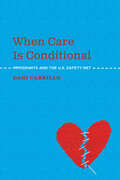
When Care is Conditional: Immigrants and the U.S. Safety Net
By Dani Carrillo. 2024
From its inception, the public safety net in the United States has excluded many people because of their race, gendered…
roles, or other factors. As a result, they must prove their moral worthiness to get resources for themselves and their families. In When Care Is Conditional, sociologist Dani Carrillo reveals the ramifications of this conditional safety net by focusing on one particularly vulnerable population: undocumented immigrants. Through in-depth interviews with Latinx immigrants in northern California, Carrillo examines three circumstances—place, gender, and immigration status—that intersect to influence an individual’s access to health care, food assistance, and other benefits. She demonstrates that place of residence affects undocumented immigrants’ ability to get care since more services are available in urban areas, where many immigrants cannot afford to live, than suburban areas, where public transportation is limited. She also shows that while both men and women who are undocumented have difficulty obtaining care, men often confront more challenges. Undocumented women who are pregnant or mothers are eligible for some government safety net programs and rely on informal coethnic networks or a “guiding figure”—a relative, friend, neighbor, or coworker—who explains how to get care and makes them feel confident in accessing it. Most undocumented men, in contrast, are not eligible for public programs except in a medical emergency and often lack someone to guide them directly to care. Men sometimes steer one another to jobs through worker centers—where they may learn about various services and take advantage of those that increase their employability, like English or computer classes—but a culture of masculinity leads them to downplay medical problems and seek health care only in a crisis. As undocumented immigrants navigate this exclusionary system, Carrillo finds that they resist the rhetoric stigmatizing them as lawbreakers. Dismissing the importance of “papers” and highlighting their work ethic, they question the fairness of U.S. immigration policies and challenge ideas about who deserves care. Carrillo offers concrete recommendations, such as improving labor conditions and reexamining benefit eligibility, to increase access to care for not only undocumented immigrants but also people who have been excluded because of their race, criminal record, gender identity, sexual orientation, or disability. She argues that working with and across populations creates a powerful form of solidarity in advocating for inclusive care. When Care Is Conditional provides compelling insights into how safety net and immigration policies intersect to affect people’s everyday lives and calls for a cultural shift so that the United States can provide unconditional care for all.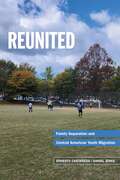
Reunited: Family Separation and Central American Youth Migration
By Ernesto Castañeda, Daniel Jenks. 2024
In the second decade of the twenty-first century, an increasing number of children from El Salvador, Honduras, and Guatemala began…
arriving without parents at the U.S.-Mexico border. In many cases, the parents had left for the United States years earlier to earn money that they could send back home. In Reunited sociologists Ernesto Castañeda and Daniel Jenks explain the reasons for Central American youths’ migration, describe the journey, and document how the young migrants experience separation from and subsequent reunification with their families. In interviews with Central American youth, their sponsors, and social services practitioners in and around Washington, D.C., Castañeda and Jenks find that Central American minors migrate on their own mainly for three reasons: gang violence, lack of educational and economic opportunity, and a longing for family reunification. The authors note that youth who feel comfortable leaving and have feelings of belonging upon arrival integrate quickly and easily while those who experience trauma in their home countries and on their way to the United States face more challenges. Castañeda and Jenks recount these young migrants’ journey from Central America to the U.S. border, detailing the youths’ difficulties passing through Mexico, proving to U.S. Customs and Border Protection officials that they have a legitimate fear of returning or are victims of trafficking, and staying in shelters while their sponsorship, placement, and departure are arranged. The authors also describe the tensions the youth face when they reunite with family members they may view as strangers. Despite their biological, emotional, and financial bonds to these relatives, the youth must learn how to relate to new authority figures and decide whether or how to follow their rules. The experience of migrating can have a lasting effect on the mental health of young migrants, Castañeda and Jenks note. Although the authors find that Central American youths’ mental health improves after migrating to the United States, the young migrants remain at risk of further problems. They are likely to have lived through traumatizing experiences that inhibit their integration. Difficulty integrating, in turn, creates new stressors that exacerbate PTSD, depression, and anxiety. Consequently, schools and social service organizations are critical, the authors argue, for enhancing youth migrants’ sense of belonging and their integration into their new communities. Bilingual programs, Spanish-speaking PTA groups, message boards, mentoring of immigrant children, and after-school programs for members of reunited families are all integral in supporting immigrant youth as they learn English, finish high school, apply to college, and find jobs. Offering a complex exploration of youth migration and family reunification, Reunited provides a moving account of how young Central American migrants make the journey north and ultimately reintegrate with their families in the United States.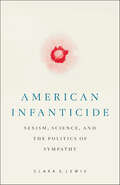
On April 22, 2015, the sorority sisters at Ohio’s Muskingum University’s Delta house encountered a horrific scene: pools of blood…
and gore in the first-floor bathroom. No one knew exactly what had happened, but the sisters suspected it had something to do with Emile Weaver. Studious, athletic, and well-liked, Emile had recently started wearing bulky sweatsuits and hiding her midsection, as if she was covering up a sudden weight gain. Could Emile be pregnant? Emboldened by fear, the sorority sisters investigated. In the driveway next to the kitchen door, they found Emile’s newborn baby girl dead inside a garbage bag. Emile’s crime seemed senseless and left her family and friends with an aching question: what happened? American Infanticide situates Emile's tragic act in a long intellectual, social, and legal history, uncovering disturbing missing chapters in our national history that undercut myths that have shaped public reactions to so-called monster moms and dumpster babies since the colonial era. Ultimately, the book uncovers how bias and inconsistency dictate how women accused of infant homicide are perceived and punished and sheds new light on how and why our legal responses to infanticide are so deeply misguided.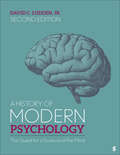
A History of Modern Psychology: The Quest for a Science of the Mind
By David Ludden. 2026
A History of Modern Psychology: The Quest for a Science of the Mind describes the evolution of psychology into the…
twenty-first century with coverage of recent events and findings that transform our understanding of the past. With a topical approach that presents key thinkers within the context of schools of thought, students are able to see how philosophers, researchers, and academics influenced one another to create the rich and diverse landscape of modern psychology in a global context. In the new Second Edition, the author expands coverage of unsung pioneers (philosopher Al-Balkhi, zoologist Charles Henry Turner, psychiatrist Grunya Sukhareva, and others), revisits the legacy of Francis Galton, explores the "Vygotsky boom," and includes new discussion of the impact of Philip Zimbardo′s Stanford Prison Experiment. Through detailed timelines and features such as "Looking Back" and "Looking Ahead," Ludden gives students a deeper appreciation for the transference of knowledge that shaped the field.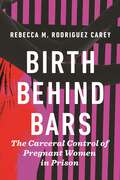
Birth Behind Bars: The Carceral Control of Pregnant Women in Prison
By Rebecca M. Carey. 2025
Pregnant women's experiences in prisonFour percent of incarcerated women—more than three thousand—are pregnant in US prisons each year, yet little…
information is known about their pregnancy, birth, postpartum, and motherhood experiences. In Birth Behind Bars, Rebecca M. Rodriguez Carey draws on in-depth interviews with women who were once pregnant in prisons in the heart of the Midwest to provide a rare, intimate portrait into the intersection of motherhood and incarceration.Using a reproductive-justice framework and narrative accounts, Rodriguez Carey shows how the prison system works alongside other carceral systems, such as the medical system and the child welfare system, to regulate and control women. She reveals how their incarceration goes beyond the function of criminal punishment, threatening both maternal and fetal health and the well-being of families. Birth Behind Bars offers an evocative account of how these powerful carceral systems collectively disrupt entire families and communities during pregnancy, birth, and the postpartum period, including long after women are released from prison.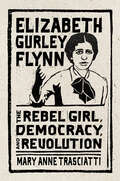
Elizabeth Gurley Flynn: The Rebel Girl, Democracy, and Revolution (CERES: Rutgers Studies in History)
By Mary Anne Trasciatti. 2025
Elizabeth Gurley Flynn was involved in almost every major campaign of the U.S. Left in the first two thirds of…
the twentieth century. An outstanding orator, writer, and tactician, Flynn is one of the most important figures in the history of the American labor movement. Inspired by the Irish freedom struggle and appalled by the exploitation and grinding poverty she saw around her, she devoted her life to the advancement of civil liberties. Here, Mary Anne Trasciatti traces Flynn’s personal and political life to explore the broader social issues of a fraught era. Born in 1890, Flynn began her activist career by joining the Industrial Workers of the World (IWW) when she was just sixteen, and she ended it as the first female chair of the American Communist Party, a position she held from 1961 until her death in 1964. In the intervening years she organized workers into unions, led strikes, championed women’s rights, supported anti-imperialist movements around the globe, protested deportation, advocated for prison reform, and fought for Black liberation. Above all, she showed absolute devotion to workers and their struggles. Slandered as an “un-American” in the anticommunist fervor of the 1940s and 1950s, Flynn was eventually ousted from the very organization she helped found, the American Civil Liberties Union, and imprisoned for two years. Though her own movement abandoned her, her commitment to the cause never wavered. This stirring biography illuminates Flynn’s inspiring life and worldview and returns her to her rightful place at the heart of labor and civil liberties history.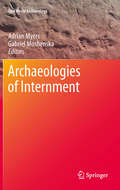
Archaeologies of Internment (One World Archaeology)
By Gabriel Moshenska, Adrian Myers. 2007
The internment of civilian and military prisoners became an increasingly common feature of conflicts in the twentieth century and into…
the twenty-first. Prison camps, though often hastily constructed and just as quickly destroyed, have left their marks in the archaeological record. Due to both their temporary nature and their often sensitive political contexts, places of internment present a unique challenge to archaeologists and heritage managers. As archaeologists have begun to explore the material remains of internment using a range of methods, these interdisciplinary studies have demonstrated the potential to connect individual memories and historical debates to the fragmentary material remains. Archaeologies of Internment brings together in one volume a range of methodological and theoretical approaches to this developing field. The contributions are geographically and temporally diverse, ranging from Second World War internment in Europe and the USA to prison islands of the Greek Civil War, South African labor camps, and the secret detention centers of the Argentinean Junta and the East German Stasi. These studies have powerful social, cultural, political, and emotive implications, particularly in societies in which historical narratives of oppression and genocide have themselves been suppressed. By repopulating the historical narratives with individuals and grounding them in the material remains, it is hoped that they might become, at least in some cases, archaeologies of liberation.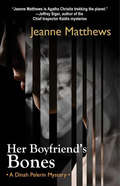
Her Boyfriend's Bones: A Dinah Pelerin Mystery (Dinah Pelerin Mysteries #4)
By Jeanne Matthews. 2013
In 1973, on a remote beach on the Greek island of Samos, a movie star named Marilita Stephan murdered her…
boyfriend, his mother,and a powerful colonel in the military junta, a crime for which she was executed. Forty years later, Dinah Pelerinarrives on Samos to spend the summer with her Norwegian boyfriend Thor before she joins an archaeological dig nearby. A policeman on sabbatical, Thor seems unduly fascinated by the murders and Dinah soon discovers that the had more than romance in mind when he chose their holiday destination. Guns supplied to the former junta by the American CIA have turned up in Norway in the hands of terrorists and Norwegian intelligence has traced the source of the weapons to Samos. The island has become a transit point for refugees fleeing the Middle East. When an Iraqi immigrantwith a fake ID is killed, Thor suspects a link to the arms traffickers. But before he can investigate, his car plunges off a cliff and he disappears.Greece's economic woes have bred corruption and Dinah fears that he was betrayed by local police and either kidnapped or murdered. Unable to trust anyone, she sets out to find him. The deeper she digs, the more connections she sees between the present crime wave and what happened in 1973. Marilitamay have been innocent and the fate of her boyfriend holds eerie parallels to Thor's disappearance. Dinah must be smarter and braver than she's ever been to prevent another Greek tragedy.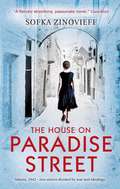
The House on Paradise Street
By Sofka Zinovieff. 2011
In 2008 Antigone Perifanis returns to her old family home in Athens after 60 years in exile. She has come…
to attend the funeral of her only son, Nikitas, who was born in prison, and whom she has not seen since she left him as a baby. At the same time, Nikitas's English widow Maud - disturbed by her husband's strange behaviour in the days before his death - starts to investigate his complicated past. She soon finds herself reigniting a bitter family feud, and discovers a heartbreaking story of a young mother caught up in the political tides of the Greek Civil War, forced to make a terrible decision that will blight not only her life but that of future generations...